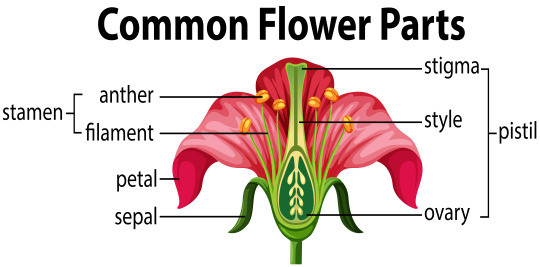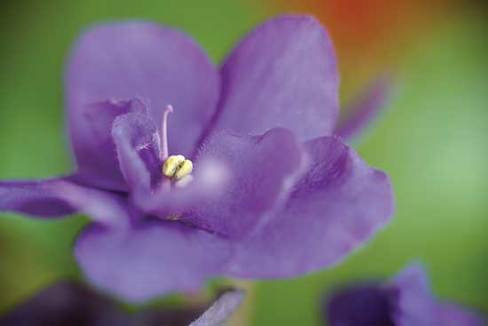#my pigments bring all the bees to the yard
Text
My stamen brings all the bees to the yard

#jokes#bees#flowers#puns#stamen might not be accurate actually#what about flowers does attract bees? is it secret UV patterns like I’ve heard?#my pigments bring all the bees to the yard#originally this was “my pistil brings all the bees to the yard” but I would guess fewer people know that word. idk.#am not a botanist#don’t come at me#some hot sexy flower action
2 notes
·
View notes
Text
Medicinal and Culinary Uses for the Shy Violet

by Crooked Bear Creek Organic Herbs
While violets’ delicate blossoms are a treat only for the observant, the plant has enjoyed a long history of medicinal and culinary use.
Leigh Hunt, an English Romantic essayist, and poet is the first known author of the phrase “shrinking violet.” In 1820, he published a passage describing a bit of woodland in The Indicator, a poetry magazine: “There was the buttercup, struggling from a white to a dirty yellow; and a faint-coloured poppy; and here and there by the thorny underwood a shrinking violet.”
Hunt was almost certainly referring to the native English, or sweet, violet (Viola odorata). This shy plant can often go unremarked underfoot, and it carries its small, slightly recurved flowers level with or just below its leaves. The phrase “shrinking violet” took a few decades to catch on — but when it did, it spread rapidly, much as its parent plant does in the garden. You may have explained someone’s quiet strength or spunky attitude by claiming that they were “no shrinking violet.” Though the cliché was inspired by the sweet violet, there are a number of native North American violets from different regions. All share a low growth habit and delicate flowers.
Picking Posies
My first memories of this plant begin in my old childhood apple orchard. That side of the yard was a bit more moist, and slightly shady — perfect conditions for violets. In spring, and again in fall, I learned to look for the heart-shaped leaves that are the telltale sign of a patch of violets.
Violets are best seen when you lie on your belly for a closer look. They’re small, growing only 4 to 6 inches tall, and they beg you to take a moment and commune with them. In Hunt’s day, people took more time to pause and see the poetry in a diminutive flower. Today, we’re more apt to see just another weed interrupting an otherwise perfectly green lawn.
The plant’s heart-shaped leaves can be smooth or hairy. Wild varieties typically flower white or in shades of purple, but the influence of cultivated violets has brought purple-streaked white flowers and various shades of yellow to their repertoire. I’ve always thought violets have a sort of cartoon-mouse-like appearance in the way they carry their petals. Violets have five petals, arranged bilaterally with two above and three below. To me, the top two seem to suggest large ears! The three petals on the bottom are put together like a landing strip for pollinators. In fact, the large, centre landing strip petal is striped with ultraviolet pigments to flag down winged pollinators. Bees are common violet visitors, the blue orchard mason bee (Osmia lignaria) chief among them.
Good Host Plants Make Good Neighbours
Speaking of the insect world, violets are the host plant for fritillary butterflies and for the violet miner bee (Andrena violae), a specialist pollinator in the eastern United States that only visits violets. Of the 14 species of greater fritillaries (Speyeria spp.) and 26 species of lesser fritillaries (Bolloria spp.), only great spangled fritillaries seem to actively seek violets. Other species simply lay eggs in locations where violets are likely to grow, and larvae must seek the plants after they hatch.
Unfortunately, because we either inadvertently destroy the cool, moist, undisturbed locations violets need to thrive, or actively fight them as weeds, these butterflies and bees are the species that will pay for our ignorance. The USDA Natural Resources Conservation Service (NRCS) lists some violet species as “invasive and noxious,” spurring many home gardeners to share tips on how to eradicate them. At the same time, the USDA Forest Service reports that fritillaries are endangered, stating clearly that “without violets, there would be no fritillaries.” Why the disparity?
The USDA NRCS list of introduced, invasive, and noxious plants compiles information about plants that the USDA considers weedy or invasive in some portion of their range. The specific criteria for a plant being included on the list are variable, and the list itself is based on the idea that we know which plants belong in which environments; that said, the plants that appear on the list — including violets — are capable of rapid spread given the right conditions. For example, Carolina horsenettle (Solanum carolinense) is native to most of the contiguous United States but is considered a noxious weed in Hawaii. Read up on how and why plants are considered invasive, and if you’re concerned about a particular plant, contact your local extension office.
Curiouser and Curiouser
If you look closer at the violet, more fascinating features appear. You could spend an entire afternoon watching ants carry away the seeds. In fall, pollinated flowers leave dehiscent seedpods — pods with a built-in weakness allowing them to burst open. Violet seedpods don’t just open; they burst and throw the seeds far and wide. Each seed has a tiny, plump appendage, called an elaiosome, which is full of nutrients and sugars that attract ants and slugs. The seed can survive being eaten, or ants might carry seeds stripped of their elaiosomes to underground waste piles. Slowly, the violet patch expands, as transported seeds germinate into new plants some distance from their parents.
Dig your fingers in just below a violet plant, and you’ll find another surprise: underground, colourless flowers! The violet must have endured great evolutionary pressure to develop such innovatively hidden flowers. Some violets also create rhizomes over time, allowing them to spread vegetatively.
Sweet Medicine
The North American common blue violet has been, by turns, the focus of love and adulation, a gold mine for the floral industry, and a despised “invasive” weed. Despite our changing attitudes toward it, the plant remains a necessary part of the ecosystem — and a resilient one, as well.
The human-violet relationship is rich with reasons for the plant to develop a secondary strategy for survival. Native violets are common throughout the eastern United States, and I’m sure small children have gone out to collect the blossoms and play with the leaves for centuries. Adults have also been fascinated with them for food, medicine, and beauty.
Viola odorata leaves and flowers are rich in vitamins A and C, and rutin. They can be used fresh, dried, or made into tinctures for medicine. Folk medicine claims violets can be used to treat a variety of respiratory ailments, headaches, high cholesterol, and skin problems, such as eczema and acne. All of these uses are scientifically supported, particularly internal use of tinctures or syrups to ease coughs, bronchitis, and whooping cough. The mucilage in violet plant parts can be soothing when used topically on eczema, impetigo, and acne. The rutin content of the plant may help strengthen and increase flexibility in blood vessels, which could ease bruises, haemorrhoids, and varicose veins. There’s also some evidence that violet-infused oil may be useful in treating insomnia, without the risk of addiction associated with most pharmaceutical solutions.

Double-flowered violets were prized in the Victorian era. Photo by Adobe Stock/Cirmu.
Late in the 19th century, British brothers William and George Saltford imported ‘Marie Louise,’ a double-flowered, highly fragrant cultivar, and built an empire of violets. The brothers, along with the other “Violet Kings,” Julius Von der Linden, E. A. Coon, and the Trombini brothers grew thousands of plants in greenhouses in Rhinebeck, New York, and neighbouring towns. Violets took off in a big way, and millions of blooms were shipped across the country by rail and waterway. During the violet’s heyday, Dutchess County, New York, was the epicenter of what was known as the violet belt, and Rhinebeck was the buckle, with more than 400 violet houses. To harvest, workers would lie on boards suspended over the beds, handpicking flowers for hours at a time. Production was labour-intensive, however; disease was a constant threat to the plants, and when fashions changed in the 1920s, violets fell out of favour.
This spring, take a closer look at the violets hiding in the grass. Consider the many uses we’ve put them to already, and the importance of a plant that serves as the sole host for dozens of insect species. Is it a noxious weed, or is it simply a successful plant that we should be using on our plates and in our medicine cabinets more often? Our need for these plants brings about a natural stewardship because we want them to continue to prosper where they’re convenient for us to harvest. When the shy violet itself beckons you to stop and look closely, I invite you to take in the bigger picture, too.
Goddess Bless!
GrannyMoon
★☽✪☾★
http://GoddessSchool.com
https://twitter.com/GrannyMooninVA
https://grannymoon.wordpress.com/
0 notes